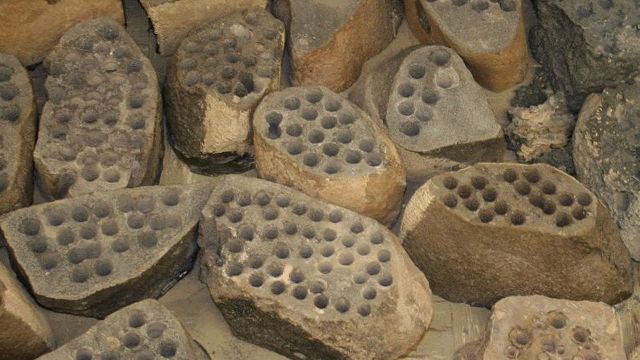
Add another word to your vocabulary of Martian geological exploration: thwacking...repeat, not fracking, but thwacking!
Thwack: to strike with or as if with something flat or heavy. (Merriam Webster's.)
On Wednesday, NASA held a press conference to announce another first in our robotic exploration of Mars. On February 8th, the rover Curiosity (of the Mars Science Laboratory mission) used its drill to bore a hole (maybe more correctly, used its thwacker to thwack a hole) into a slab of flat bedrock. The boring tool uses vibrating impacts to speed up the rock penetration of the rotating drill bit, not unlike a handheld impact drill, or a tiny jackhammer with a spinning tip.
The hole, 6.4 centimeters deep (about the length of my pinky finger), is aimed at delivering a sample of pulverized rock powder to Curiosity's onboard chemical analysis laboratories--more specifically, a sample from deeper into the rock than 5 centimeters, rock which has not been chemically altered by the weathering effects that the material at the outer surfaces endures.
The patch of bedrock chosen for this micro-excursion is thought to be ancient, making a probing of mere inches an excursion of perhaps millions of years into Mars' past--maybe far back enough to probe a time when liquid water existed on its surface. Regardless of whether it finds the watery signature of ancient surface liquid in this sample, exciting though that would be, the rover's mission is to probe Mars' geology to assess the past habitability of the planet--so we'll get what we get.